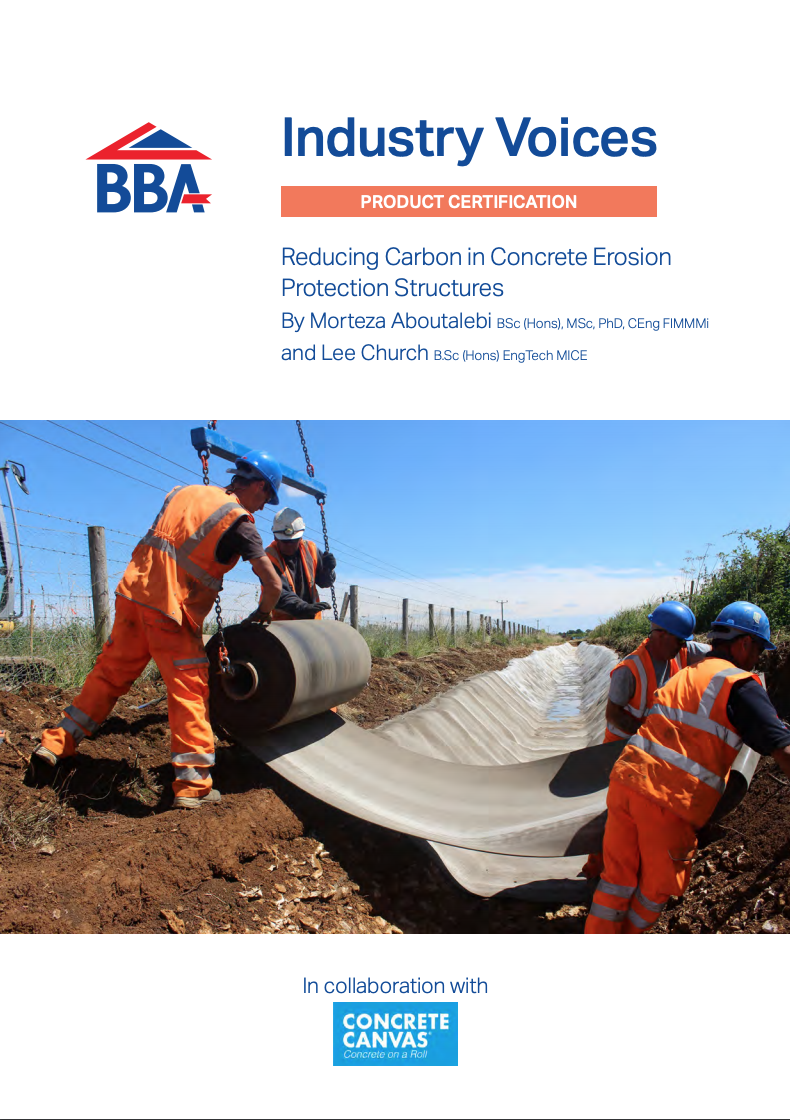GUEST POST
At the start of this year I was asked if I could pull together some thoughts on the most important technology trends in construction in 2023. After a few hours of research, I began to feel increasingly downcast and not just because of the grim January weather. It isn’t hard to turn up articles and white papers from the last decade, identifying a whole range of potentially game changing technologies and innovation. Unfortunately, I also kept finding later pieces bemoaning how slow the sector has been to embrace the potential these innovations have to address the sectors long running challenges around productivity, safety, quality or the immense task of decarbonising the industry. I felt like I was stuck in the trough of despond of Gartner’s famous technology hype cycle
What is the platform programme?
I clearly needed a different approach so turned my attention to some of the people who are focused on trying to climb out of the trough and ensure innovation deployed at scale across the built environment. The Construction Innovation Hub (CIH) is a good example. It’s recently completed initial programme has focused on driving the adaptation of manufacturing and digital approaches to construction that can improve the delivery, resilience and performance of our built environment. Over the last 4 years, founding partners BRE, Centre for Digital Built Britain and the Manufacturing Technology Centre (MTC) have been working with over 600 businesses, universities and sector organisations, with financial and moral support from across government, including the influential Infrastructure and Projects Authority.
The Platform Programme is a part of the hub’s work that aspires to be genuinely transformational. Keith Waller, CIH’s Programme Director explained to me that its important to differentiate between offsite construction and a product platform approach. The former could be characterised as doing traditional construction better while the latter means adopting a whole new approach that can allow the sector to fully embrace the potential of digitisation and Modern Methods of Construction to make the enormous leaps in productivity, performance and whole life value seen across manufacturing in recent decades.
Sam Stacey, former Director of the Transforming Construction Challenge, puts it more poetically, We need only look to the skies above us to see the truly transformative potential of standardised, repeatable platform systems. Pioneering sectors like aerospace have, for many years, applied the ‘kit of parts’ approach to designing and building the thousands of airliners which traverse the globe. In doing so, they have reaped the benefits, which range from increased productivity and efficiency to greater market willingness to invest in new solutions.
This time really will be different
Of course those of us with long memories know that there have been many previous efforts to apply the methods of advanced manufacturing to the construction industry. Sir John Egan’s Rethinking Construction report to the Blair government way back in 1998 drew heavily on his experience as Chief Executive of Jaguar. So what’s different this time? What will allow these ideas to get beyond a few niche applications and into general use?
Waller points to a number of reasons to be cheerful. Firstly the need has been well established and the enabling environment is moving in the right direction. The UK government, with its multi-billion pound investment programme has made clear its wants to access the benefits of digitisation and MMC and gives its backing to a platform approach in key documents such as the Construction Playbook and Transforming Infrastructure Performance.
This means there is a potential for an enormous addressable market of schools, hospitals and other social infrastructure. The Hub has been working to unlock this opportunity. Its Product Platform Rulebook sets out principles and processes, created in consultation with industry for developing for developing a valid product platform. In addition a series of physical sandpits are currently running, providing a safe space for industry players to develop, test and refine solutions and products for key public priorities such as schools and hospitals. Waller describes this as proving both that a platform approach is doable – but more importantly that its worth doing, and will deliver real improvements in productivity, quality, cost and carbon.
A Future Operating Model
Shifting a significant chunk of the industry towards a platform approach will take time and Waller and his colleagues are now turning their attention to some of the detailed practicalities of what he describes as the Future Operating Model needed for its adoption. He sees certification and assurance as having an important role in this future industry ecosystem.
As an example, the platform in a platform approach is grounded in a set of harmonised standards, specifications and dimensions for different elements of structures. In the same way that the aerospace clients set standards for the interface between a wing and fuselage, construction clients will need to learn to be able to go to the market with something similar for say doors. The supply chain can then compete and innovate to provide the products that slot into the platform. It will however be absolutely vital that entry of these products into any catalogue used across the procurement pipeline of an organisation like NHS England, is based on certified compliance with standards for building safety, energy and carbon performance et al, so that the client can have confidence that whatever kit of parts is assembled will deliver the social, economic and environmental value they are seeking. More broadly, the platform approach represents a shift in philosophy. Construction has traditionally focused on quality control and checking for defects across a loosely co-ordinated process of design and construction. A platform approach means moving to a model of quality assurance and defect avoidance within a system of the integrated manufacturing and assembly.
Waller acknowledges that this represents a profound change that may have implications for the structure of the industry, potentially shifting power and influence away from tier 1 contractors and down into what have traditionally been lower levels of the supply chain. It also means client organisations fully embracing a philosophy of procuring for whole life value and fully embracing a mindset of standardisation and repeatability. None of this is easy but Waller counsels “Change is most definitely coming. It will be interesting to see whether our existing industry chooses to disrupt, or waits to be disrupted by others.”

AUTHOR PROFILE:
Andrew Crudgington is an independent researcher and writer who works across the built environment. Previously he was Director of Policy at the Institution of Civil Engineers.
Share This Story, Choose Your Platform!
Related News
GUEST POST
At the start of this year I was asked if I could pull together some thoughts on the most important technology trends in construction in 2023. After a few hours of research, I began to feel increasingly downcast and not just because of the grim January weather. It isn’t hard to turn up articles and white papers from the last decade, identifying a whole range of potentially game changing technologies and innovation. Unfortunately, I also kept finding later pieces bemoaning how slow the sector has been to embrace the potential these innovations have to address the sectors long running challenges around productivity, safety, quality or the immense task of decarbonising the industry. I felt like I was stuck in the trough of despond of Gartner’s famous technology hype cycle
What is the platform programme?
I clearly needed a different approach so turned my attention to some of the people who are focused on trying to climb out of the trough and ensure innovation deployed at scale across the built environment. The Construction Innovation Hub (CIH) is a good example. It’s recently completed initial programme has focused on driving the adaptation of manufacturing and digital approaches to construction that can improve the delivery, resilience and performance of our built environment. Over the last 4 years, founding partners BRE, Centre for Digital Built Britain and the Manufacturing Technology Centre (MTC) have been working with over 600 businesses, universities and sector organisations, with financial and moral support from across government, including the influential Infrastructure and Projects Authority.
The Platform Programme is a part of the hub’s work that aspires to be genuinely transformational. Keith Waller, CIH’s Programme Director explained to me that its important to differentiate between offsite construction and a product platform approach. The former could be characterised as doing traditional construction better while the latter means adopting a whole new approach that can allow the sector to fully embrace the potential of digitisation and Modern Methods of Construction to make the enormous leaps in productivity, performance and whole life value seen across manufacturing in recent decades.
Sam Stacey, former Director of the Transforming Construction Challenge, puts it more poetically, We need only look to the skies above us to see the truly transformative potential of standardised, repeatable platform systems. Pioneering sectors like aerospace have, for many years, applied the ‘kit of parts’ approach to designing and building the thousands of airliners which traverse the globe. In doing so, they have reaped the benefits, which range from increased productivity and efficiency to greater market willingness to invest in new solutions.
This time really will be different
Of course those of us with long memories know that there have been many previous efforts to apply the methods of advanced manufacturing to the construction industry. Sir John Egan’s Rethinking Construction report to the Blair government way back in 1998 drew heavily on his experience as Chief Executive of Jaguar. So what’s different this time? What will allow these ideas to get beyond a few niche applications and into general use?
Waller points to a number of reasons to be cheerful. Firstly the need has been well established and the enabling environment is moving in the right direction. The UK government, with its multi-billion pound investment programme has made clear its wants to access the benefits of digitisation and MMC and gives its backing to a platform approach in key documents such as the Construction Playbook and Transforming Infrastructure Performance.
This means there is a potential for an enormous addressable market of schools, hospitals and other social infrastructure. The Hub has been working to unlock this opportunity. Its Product Platform Rulebook sets out principles and processes, created in consultation with industry for developing for developing a valid product platform. In addition a series of physical sandpits are currently running, providing a safe space for industry players to develop, test and refine solutions and products for key public priorities such as schools and hospitals. Waller describes this as proving both that a platform approach is doable – but more importantly that its worth doing, and will deliver real improvements in productivity, quality, cost and carbon.
A Future Operating Model
Shifting a significant chunk of the industry towards a platform approach will take time and Waller and his colleagues are now turning their attention to some of the detailed practicalities of what he describes as the Future Operating Model needed for its adoption. He sees certification and assurance as having an important role in this future industry ecosystem.
As an example, the platform in a platform approach is grounded in a set of harmonised standards, specifications and dimensions for different elements of structures. In the same way that the aerospace clients set standards for the interface between a wing and fuselage, construction clients will need to learn to be able to go to the market with something similar for say doors. The supply chain can then compete and innovate to provide the products that slot into the platform. It will however be absolutely vital that entry of these products into any catalogue used across the procurement pipeline of an organisation like NHS England, is based on certified compliance with standards for building safety, energy and carbon performance et al, so that the client can have confidence that whatever kit of parts is assembled will deliver the social, economic and environmental value they are seeking. More broadly, the platform approach represents a shift in philosophy. Construction has traditionally focused on quality control and checking for defects across a loosely co-ordinated process of design and construction. A platform approach means moving to a model of quality assurance and defect avoidance within a system of the integrated manufacturing and assembly.
Waller acknowledges that this represents a profound change that may have implications for the structure of the industry, potentially shifting power and influence away from tier 1 contractors and down into what have traditionally been lower levels of the supply chain. It also means client organisations fully embracing a philosophy of procuring for whole life value and fully embracing a mindset of standardisation and repeatability. None of this is easy but Waller counsels “Change is most definitely coming. It will be interesting to see whether our existing industry chooses to disrupt, or waits to be disrupted by others.”

AUTHOR PROFILE:
Andrew Crudgington is an independent researcher and writer who works across the built environment. Previously he was Director of Policy at the Institution of Civil Engineers.
Share This Story, Choose Your Platform!
Related News
Get in touch
Please complete the form below and we will contact you as soon as possible.
To help us to respond to your inquiry as quickly as possible, we have put a handy list of our services below.


